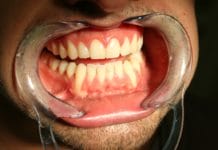My employer often calls me “Eagle Eye” because he knows and appreciates my skills as a hygienist. Having a heightened sense of the oral condition of each patient sets up for a great handoff during the doctor’s examination. It is essential to go above and beyond routine care to assist in co-diagnosing with the doctor and patient for a practice to continue to grow.
Co-diagnosing can be a three-way channel in the dental profession. The chain links the hygienist, dentist, and patient in diagnosing, treatment planning, and treatment outcome. Each person in this chain creates a strong link in building a permanent relationship based on trust, confidence, and respect of each other’s opinions. The end result is a happy patient, happy hygienist, and happy dentist.
Where Co-diagnosis Starts
Dental hygienists sit in a prime position to build the first link in the chain. This link is between the hygienist and the patient.
It begins when we seat our patient and have that one-on-one motivational interview. The patient will either inform us of a problem or concern or state that everything is fine. Our job is to be a sleuth and determine what is bothering the patient and/or examine for any asymptomatic issues with the intraoral camera, radiographs, and visual examination.
By showing our findings to the patient, we are co-diagnosing. When patients visualize their oral health status with digital imaging, it allows them to see and inquire about conditions that they may not have been aware of.
A hygienist who uses the intraoral camera is imperative for the first link of co-diagnosing. Keep the image in question up on the screen throughout the appointment. This gives the patient adequate time to connect with the fact that, yes, something seems to be amiss, and will want to know what can be done to fix the situation.
The Doctor Joins the Link
The next link comes when the doctor performs the examination. By keeping the questionable image on the screen until the doctor arrives, the doctor is offered a first glance at a possible concern that either the patient or hygienist presents. This is the doctor-hygienist link. The doctor may inquire about the image, and the hygienist can then guide the discussion on clinical findings.
The patient-doctor link comes next. After a thorough examination of clinical and digital images, the doctor should discuss treatment options with the patient. By giving options, the patient becomes part of the co-diagnosis. After all, it is their mouth and, believe it or not, dental care is optional in most cases.
There is a lot of competition for dental patients. Gaining a patient’s trust is key in building a practice and growing patient referrals. With the onslaught of dental chain practices and insurance regulating care, trust becomes even more critical in keeping and growing your existing patient base.
The Eagle Eye of Co-diagnosis
The hygienist and patient then discuss the doctor’s treatment options in greater depth to aid in understanding and benefits of each potential option. This reaffirms that first link in the chain, the patient-hygienist link. Having a strong chain will result in trust and affirmation of the proposed treatment.
Being an “eagle eye” means going above and beyond just “cleaning teeth” and sitting aside while the doctor does the examination. Remember, we are perched on that saddle chair for the better part of an hour, while the doctor may be in there for only a few moments.
Use your loupes to help hone your eagle-eye vision on potential dental concerns such as cracks, fractures, attrition, abrasions, leaky restorations, secondary decay, tissue abnormalities, or a crown that has worn through. While scaling and exploring, we are better able to check crown margins than the doctor due to the simple fact that we are navigating every surface of every tooth. Listen to your gut when it tells you to take an intraoral image of a suspicious area. Your gut is guided by your “eagle eye” and is usually a major tool in the co-diagnostic process.
Get patients involved in the co-diagnostic process. People want to know they have a say in their health and finances and appreciate the guidance of an expert. Make sure you and the dentist are on the same page, trusting and respecting each other’s opinion. Your patients will pick up on this positive vibe.











